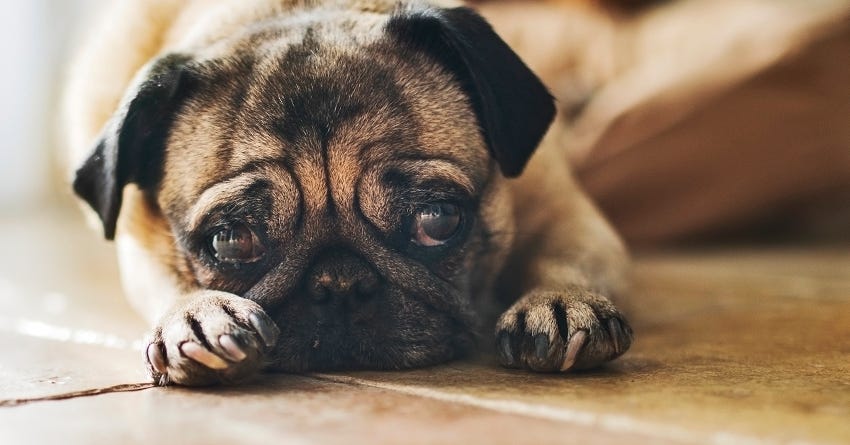Canine Depression: What to Do When Your Dog Gets the Blues

One of the reasons owning a dog is so rewarding is their carefree and happy-go-lucky nature.
There's nothing like coming home and being greeted at the door with a wagging tail and sloppy kiss from your dog. However, just like their owners, dogs can get the blues. Here's some tips to help you recognize and treat canine depression. Follow this advice and you'll have your best friend back to normal in no time.
What Is Canine Depression?
When people are depressed, they cry, avoid contact with friends and family members, and generally check out from their daily lives. When questioned on their odd behavior, they are sometimes able to express the fact that they are not feeling well, physically or emotionally. Canine depression is harder to spot since our dogs can't put their negative feelings into words. It's up to you to assess your pooch's emotional state and to do what's best for their well-being. Here's some things to look for if you think your dog might be suffering from canine depression.
Symptoms of Canine Depression
Anything that seems out of place or abnormal in your dog's behavior could be a warning sign that she is suffering from canine depression. Some of the most common symptoms include:
- Changes in Eating Habits: If your dog quits eating or suddenly starts eating way too much, this could be a sign that there's something wrong.
- Constant Lethargy: Depressed dogs often become lethargic. All dogs sleep a lot, but constant sleeping, even when you're offering positive attention, could be an indicator of canine depression.
- Lack of Interest: If your dog loved playing fetch, but is suddenly indifferent to the game, she may be suffering from canine depression. This applies to any activity that the dog previously enjoyed. It could be your daily walk, a favorite toy, or her after dinner treat.
- Hiding: If your previously gregarious dog starts spending all her time behind the couch, in a closet, or otherwise out of sight, she may be feeling blue.
Causes of Canine Depression
Canine depression has a number of causes. A change in environment such as moving to a new home could trigger a bout of depression, as can seasonal and weather changes. The loss of a favorite family member (two or four legged) is one the most common causes of canine depression. The loss could be due to a divorce, a child going back to school or off to college, or a death in the family. Just like humans, your dog will feel the empty space left by the family member and need time to mourn and accept the loss.
How to Help
Many of the symptoms of canine depression can also indicate a physical problem, so the first treatment step should be a trip to the vet's office for a thorough examination. If the vet gives your dog the all clear, you'll know that it is an emotional rather than physical problem you are dealing with. Luckily, canine depression is typically a short-lived disorder. Give your dog time to adjust to new circumstances and she will probably return to her happy old self. You can help her in her journey back to happiness by participating in and encouraging some of her favorite activities. Take time out of your busy schedule to go for a walk, play a game of fetch, offer a tasty treat, or scratch your pooch's belly. In rare cases, canine depression becomes a long lasting issue. As a last resort, dogs can be prescribed anti-depressant medication. Three of the most common medications for dogs are Prozac, Clomicalm, and Zoloft. We do our best to shield our furry friends from the troubles of the outside world, but lifestyle changes and the passing of time may cause your best friend to develop canine depression. Now you'll know what to do if he does.


